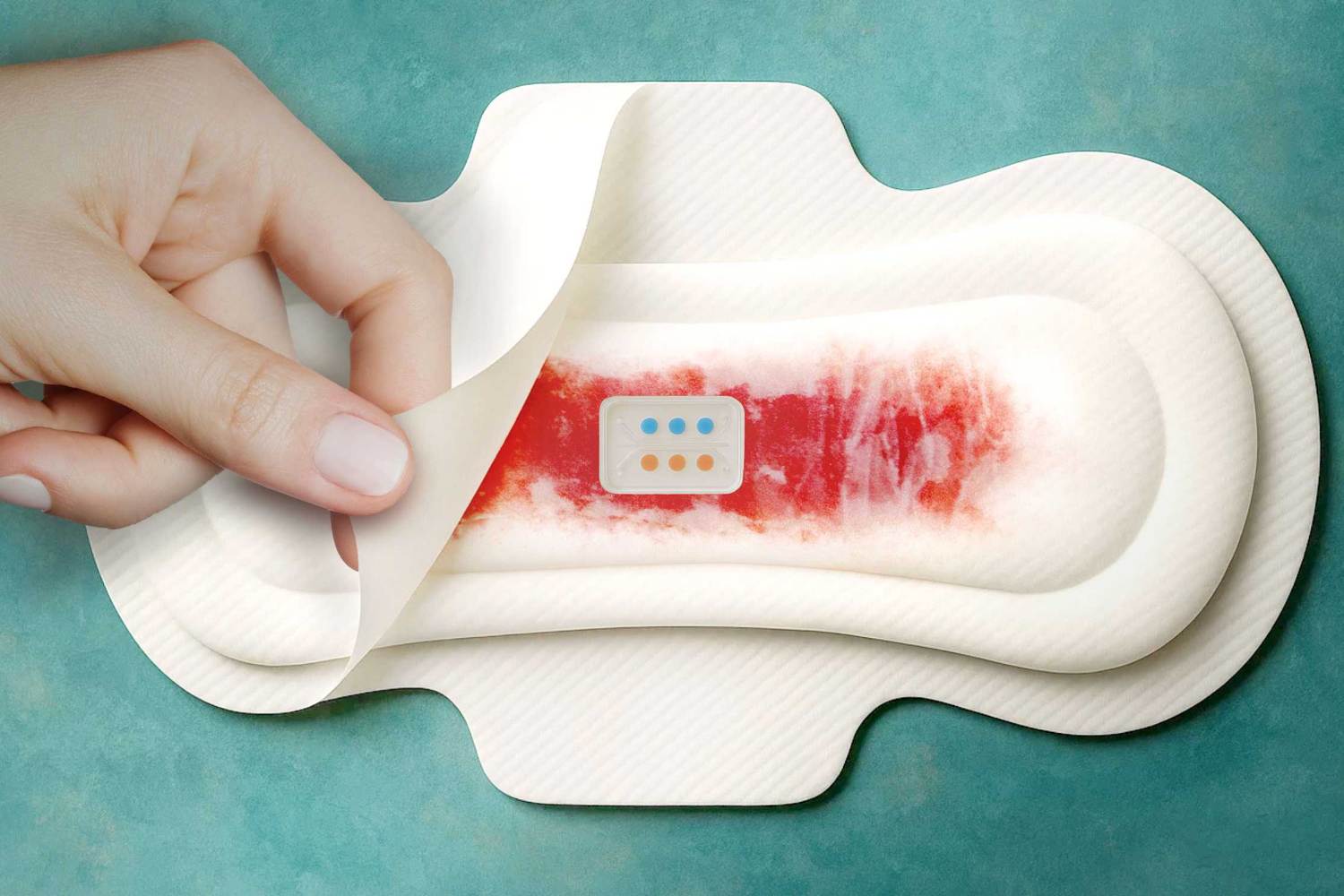A smart pad that detects cancer and inflammation markers in menstrual blood could revolutionize women's health—no lab needed.

@ETH Zurich
“We’re trying to turn what has long been dismissed as waste into a powerful tool for health,” say researchers behind MenstruAI, the world’s first smart sanitary pad prototype designed to detect biomarkers in menstrual blood. Developed by a collaborative team at ETH Zurich and several Swiss universities, this device could represent a quiet revolution—not just in early disease detection, but in how we view menstruation itself.
A simple mechanism hiding radical potential
At its core, MenstruAI is surprisingly low-tech. No wires, no sensors, no need for a lab. The pad contains a reagent strip that reacts with menstrual blood in much the same way as a COVID rapid test. Through a color change, it signals the presence of three key biomarkers: C-reactive protein (linked to inflammation), CEA (a common tumor marker), and CA-125, which often appears in higher concentrations in cases of endometriosis or ovarian cancer.
What happens next is equally straightforward: the user wears the pad as usual, takes a photo of the color reaction using a smartphone, and analyzes the result through a dedicated app. If the user prefers, the result can even be interpreted with the naked eye.
It’s a solution that blends simplicity and science, and the implications stretch far beyond diagnostics.
Clinical trials underway: data, diversity and a break with taboos
Blood, especially menstrual blood, has long been overlooked in medical research—often treated more as a nuisance than a source of insight. MenstruAI aims to change that narrative. By analyzing this unique and underutilized fluid, the project could provide a non-invasive, affordable health screening method, especially vital in regions where access to healthcare is limited.
Yet, the path isn’t without its challenges. Menstrual blood is highly variable—it differs not just from person to person, but across phases of a single cycle. That variability makes calibration a complex task. For this reason, the team is now engaged in large-scale clinical trials, collecting data to refine the device’s accuracy and consistency.
Still, MenstruAI is not just a technological achievement. It’s also a cultural provocation. The project doesn’t just promise early warnings for diseases; it demands a shift in how society treats menstruation. As one researcher put it: “We can’t improve women’s health if we keep ignoring their biology.”
By highlighting what has long been hidden, MenstruAI brings menstrual health into the spotlight, not just as a hygiene issue but as a rich, data-laden frontier for preventive medicine.
Fonte: ETH Zurich/ Advanced Science
